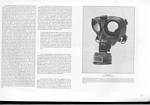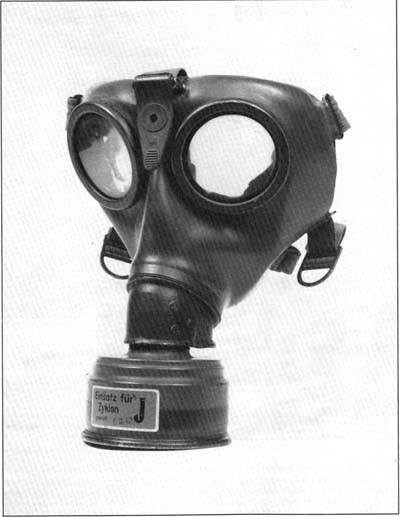|
|
 |
 |
AUSCHWITZ:
Technique
and Operation
of
the Gas Chambers © | |
|
| |
 |
Back |
 |
Contents |
Page 495 |
 |
Home
Page |
Forward |
 |
| |
The trolley for transporting the corpses was little used in
Krematorium II. It was replaced by a metal stretcher (in German
“Leichenbrett”, corpse board) that was pushed to the back of the
muffle with the aid of iron rollers located below the bottom edge of
the muffle door. This new device was invented, it appears, by
Obercapo August. It was later used in all the crematoriums. On the
furnaces of Krematorien II and III, there was a single pair of
rollers for three muffles which could he moved along an iron bar
fixed in front of the muffle doors. In Krematorien IV and V, each
muffle had two rollers of its own permanently installed before the
door [see Document 36, with a "Leichenbrett"I. Each
crernatorium [furnace] had two rollers for charging the corpses.
This "stretcher" was placed before the muffle. Two prisoners loaded
it with corpses. The procedure was to put the first corpse with the
feet towards the muffle, back down and face up. Then, a second
corpse was placed on top, again face up, but head towards the
muffle. This method was used so that the legs of the upper corpse
blocked that below and did not get in the way when the corpses were
introduced into the furnace. Two prisoners loaded the stretchers.
One end of the stretcher was put in front of the muffle, below the
bar, alongside which stood two prisoners. While the corpses were
being loaded on the stretcher, one of these opened the door of the
muffle and the other positioned the rollers. Then, they lifted the
stretcher and put it on the rollers, while a fifth prisoner,
positioned at the handles at the other end of the stretcher, lifted
it at the same time as them and pushed it into the muffle. As soon
as the corpses were inside, a sixth prisoner held them there with a
fire iron [Document 37] while the fifth withdrew the
stretcher. The sixth man also had to cool the stretcher as it came
out of the furnace by pouring over it water in which soap had been
dissolved so that the next load of corpses would slide easily on the
metal of the stretcher without sticking to it. [see David Olère's
sketch of the Krematorium III furnace room, Document 38,
showing a team of three prisoners (the third, fourth and fifth
in Tauber’s description) charging corpses into the furnace by means
of a “Leichenbrett”]. The same procedure was used for the following
charge destined to he incinerated in the same muffle. We had to work
fast, for the corpses put in first soon started to burn, and their
arms and legs rose up. If we were slow it was difficult to charge
the second pair of corpses. During the introduction of these other
two corpses, I was able to observe the cremation process. It
appeared that the trunk of the body rose and the arms stretched
towards the sky before contracting. The same thing happened with the
legs. The bodies became covered in blisters. Gassed bodies that had
remained in the store room for two days were swollen, and in the
fire their diaphragm burst and their intestines poured out. I was
also able to observe how cremation proceeded while I was moving the
corpses in the furnace with a fire iron, to accelerate the
combustion. After each charging, the SS head of the Kommando (SS-
Kommandoführer) checked to make sure that the furnaces were properly
filled. We had to open each muffle for him and at that moment we
could see what was happening inside. We burned the bodies of
children with those of adults. First we put in two adults, then as
many children as the muffle could contain. It was sometimes as many
as 5 or 6. We used this procedure so that the bodies of children
would not be placed directly on the grid bars, which were relatively
far apart. In this way we prevented the children from falling
through into the ash bin. Women’s bodies burned much better and more
quickly than those of men. For this reason, when a charge was
burning badly. we would introduce a woman’s body to accelerate the
combustion.
At the beginning of the cremation process. the
furnaces were heated only by their fireboxes and the charges burned
slowly. Later on, as cremations succeeded one another, the furnaces
burned thanks to the embers produced by the combustion of the
corpses. So. during the incineration of fat bodies, the fires were
generally extinguished. When this type of body was charged into a
hot furnace, fat immediately began to flow into the ash bin, where
it caught fire and started the combustion of the body. When
“musulmans” were being cremated, it was necessary to constantly
refuel the fireboxes. The shift boss (Vorarbeiter) wrote in a
notebook the number of corpses incinerated per charge and the head
of the Kommando (Kommandoführer), an SS man, checked these entries.
After an entire transport had been cremated, he took away the
notebook. Each time the Sonderkommando was relieved, various SS
guards and heads of Kommando were present. Among these last I
remember Georges, Knaus, Kurschuss, Schultz. Köln and Kellers.
Scheimetz, whom I have already mentioned, was Kommandoführer for a
while in Krematorium IV. |
| |
[In the Birkenau Krematorien there was an SS hierarchy
most probably composed of a few SS guarding the building and
grounds, two or three SS Konnmandoführer, each in charge of the
work of one Sonderkommando shift for a given period, and a
Krematorium head, whose authority, depending on the evolution of
the “tasks” to be accomplished, covered one, two or four
Krematorien. The Sonderkommando members had their own hierarchy,
modelled on that of the SS. The Sonderkommando seems to have been
split into shifts of 30 to 50 men, each with one or more shift
bosses / Vorarbeiter assisting a Capo. At their head was a chief
Capo / Obercapo appointed to one or two Krematorien.]
|
| |
All the Kommandoführer ill-treated the Sonderkommando prisoners
working in the Krematorien. Sometimes their cruelly was such that on
one occasion Voss, one of the heads of crematorium who was later
transferred to another post, [openly] criticized Kommandoführer
Georges who was hounding us for the simple reason that no convoys
were arriving and there was a lack of work, saying to him: “Wenn du
hast nicht was zu umlegen, dann bist du wild. Ich habe das schon
genug” [meaning roughly “Whenever you have nothing to wipe out, you
go mad. I’ve had enough of it”) Apart from this Voss, the heads of
this crematorium during its activity were: Unterscharführer
[sergeant] Steinberg, Hauptscharführer [master sergeants] Hirsch and
[Otto) Moll, Scharführer [staff sergeant] Puch [actually Buch] and
Oberscharführer [senior staff sergeant. Erich] Mussfeld who came
from Lublin [Maidanek] after the liquidation of his
crematorium.
Hauptscharführer Moll was the most
degenerate of the lot. Before my arrival at the camp, he was in
charge of the work at the Bunkers, where [not far away] they
incinerated the gassed victims in pits. Then he was transferred for
a while to another section. In view of the preparation necessary for
the “reception” of convoys from Hungary in 1944, he was put in
charge of all the Krenntorien. It is he who organized the
large-scale extermination of the people arriving in |
|
| |
 |
Document 35 |
| |
|
|
| |
Document 35
[Photograph by Pierre BESSON] |
|
| |
|
|
| |
Regulation Wehrmacht gasmask
type GM ( or Gm) 38, size 2 [ref TM-E 30-451, “L’armeé allemande”of
1st September 1943 and “Handbook on German military forces” of 15th
March 1945, technical manuals published by the United States War
Department] manufactured in December 1940 and fitted with a “J”
filter cartridge “For use with Zyklon”, tested in December 1943. The
main absorbant chemicals used for fixing hydrocyanic acid are
charcoal impregnated with hexamethylenetetramine (or urutropine)
caustic pumice and sodium lime. |
| |
| |
AUSCHWITZ:
Technique
and operation
of the gas chambers
Jean-Claude Pressac
© 1989, The
Beate Klarsfeld Foundation |
 |
Back |
Page 495 |
Forward |
 |
|

